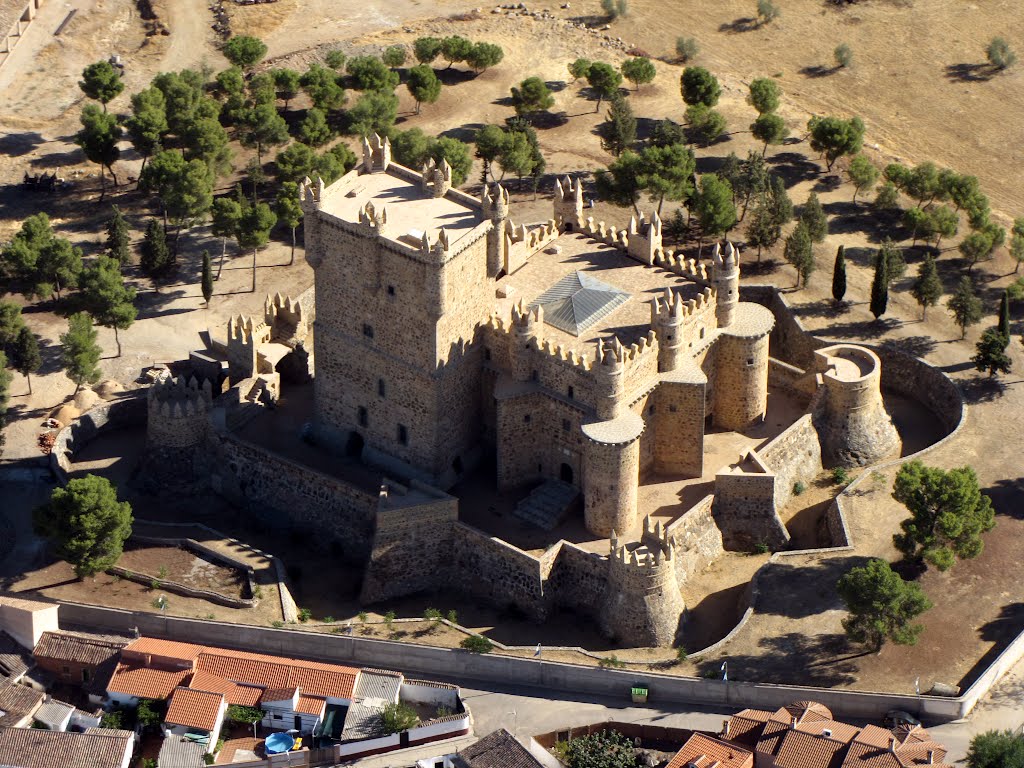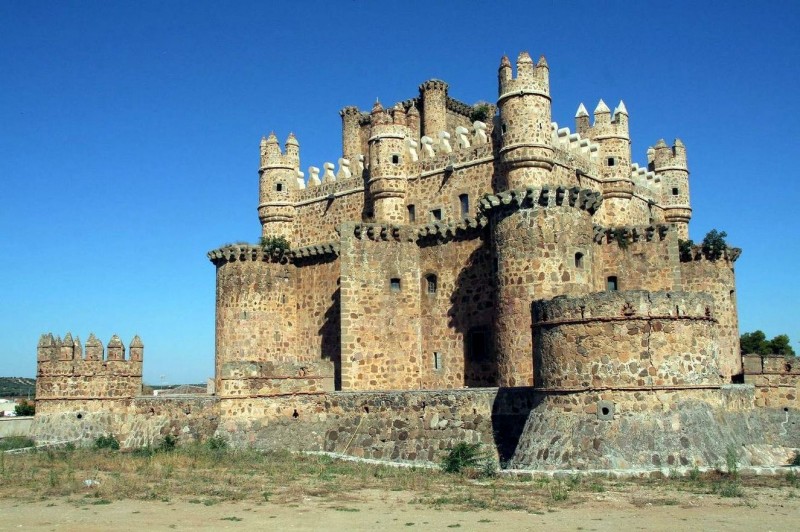Towers with galleries are very important for defense
Such buildings are not uncommon in the rich castles of the late Middle Ages. They are especially common in ordersburgs – German fortresses built by the Crusaders. From real architecture, they are often transferred to films and computer games. The designers of the Dark Souls series of games, for example, are simply obsessed with these designs.
Fantasy fans speculate that the towers with adjoining galleries were very important for the defense of the castle. Allegedly, the archers, having occupied the bridge, bravely fired back there from the pressing enemies.
But the truth is much more prosaic and uglier. Of course, such a turret – it, by the way, is called a dansker – was used to protect the castle if the besiegers attacked from that side. But it was rarely located near the entrance to the fortress, preferring to build on the outskirts. Because it’s a toilet.
Sometimes the dansker was also ironically called the “Golden Tower”, because “night gold”, that is, feces, was raked out from there. They were used in agriculture for the preparation of compost and fertilizers.
By the way, imagine what it’s like to run there over a 55-meter bridge every time you want to go to the bathroom. And when the besiegers are below? If these scoundrels bring down the gallery, throwing a shell from a trebuchet at it, you can be left without a toilet. We’ll have to endure until the war is over.

All spiral staircases in castles are twisted clockwise
Spiral staircases are regularly found in medieval towers. If you visit any castle on a tour, the guide will surely tell you that they were built in a special way – twisting clockwise.
If enemies break into the tower, it will be difficult for them to fight with the defenders of the fortress, standing a couple of steps higher. After all, most people hold a weapon in their right hand, and a shield in their left. When the attackers swing, their swords and axes will hit the wall. And the garrison of the fortress will have enough space to swing their blades, and their blows will be effective.
Sounds cool, but that’s just a misconception. Firstly, no medieval documents on the construction of castles contain any mention of the need to build stairs in this way.
Secondly, not in all fortresses the rises are twisted clockwise, that is, from left to right. The Castle Studies Group has counted more than 85 castles in England alone, where they were built from right to left. And scientists from the University of Chester generally found that about 30% of all fortresses in Europe do not comply with the “clockwise” rule.
And, finally, during medieval battles, stabbing blows were more often delivered: they pierced clothes and armor much more effectively. Neither the besiegers nor the defenders could deliver a chopping blow in a cramped room or in the ranks. Therefore, in the castle, warriors would rely more on spears and swords than on axes and clubs.
But to push opponents who burst into the fortress from a height, poking at them with spears, is a very good idea. Therefore, the steps in many towers were made very narrow, so that it was difficult to stand on them with the whole foot. It was easier than ever to resist and roll head over heels, collecting numerous fractures along the way.
The myth of the “hour hand rule” appeared thanks to an essay in 1902 by the English scientist Theodore Andrea Cooke. This gentleman was not a historian, but only an art critic and an amateur swordsman. He studied spirals in architecture and simply came up with a theory about the relationship between right-handedness and the direction of spiral staircases.
There was a strong stench in the castles
Many fans of the “realistic and gloomy” Middle Ages claim that the castles stank all the time of feces, urine, mold and dampness. And the lords during the feasts, having sorted through the wine, got up from the table, departed from the banquet hall into the corridor and relieved themselves right there.

And this is some kind of intellectuals – real knights performed all the necessary procedures right on the spot, without turning away from the ladies and without taking off their armor! Joke.
In general, in the Middle Ages, hygiene was far from being as good as it is now. There were no such benefits of civilization as running water in the castles. Although there was a source of clean water, for example, a well. But in order to wash normally, it was necessary to force the servants to heat the water on the fire.
So, for example, evidence has been preserved that the floor in the fortresses was covered with reeds by servants. And changed it regularly to keep it smelling good and clean.
If the owner of the castle was not just a petty knight, but a decadent rich feudal lord, then the floors were generally covered with fragrant herbs: lavender, hyssop, thyme and meadowsweet. All this goodness was grown in specially designated fields, where peasants were forbidden to walk and graze cattle.
In addition, fragrant plants, including roses, were thrown into the water for baths and wash basins, and flower garlands were hung around the rooms to create coziness. Household items were sprinkled with clove and lavender powders. Aromatic herbs were also added to food and drink: sage, lavender and coriander were believed to help with headaches and fevers.
The reason for such a passion for fragrant plants is superstition. In the Middle Ages, it was believed that unpleasant odors, called miasms, carry diseases. Don’t believe? And you smell what it smells like in a plague-ridden quarter, and doubts will disappear. When the crusaders returned from the Middle East and brought perfume and rose water with them, the nobles were crazy about these innovations: they were considered not so much aesthetic as healing.
